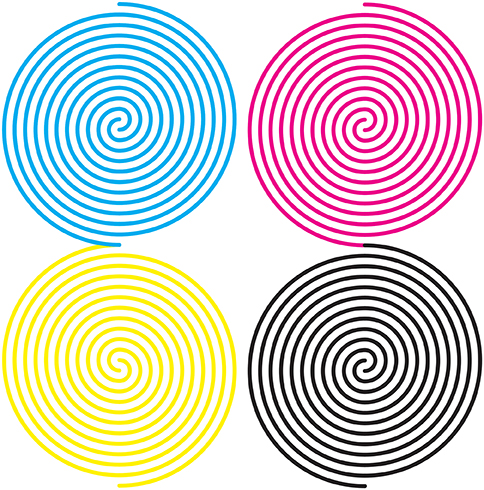
When I was in third grade, I resolved to win an award in my school’s next Art Fair.
From an adult perspective, this wasn’t a particularly challenging an ambition. But as a child, you work within the goals of your immediate world, and this was mine. Saint Joseph’s School was a small Catholic grammar school in a small Massachusetts town. The competition, in terms of numbers, wasn’t great—tens of my peers. It also wasn’t fierce: most of the other kids were far less interested in or attentive to creative pursuits. But there was a measure of accomplishment involved. This was before our current era of universal affirmation (“Truitt Intermediate School, WHERE ‘EVERYONE IS A STAR’”). The nuns—using their own particular measure—were making decisions based on merit, not equally sharing out the gratification.
The resolution was made in the wake of my younger (one year and seven days) sister receiving an award in that year’s fair. It wasn’t that I disparaged Karen or her winning entry—a portrait of flamingos composed in tempera paint, cotton balls, and macaroni. However, my older (one year, eight months) brother Kevin had claimed a blue ribbon in last year’s exhibition. With two siblings being honored for their art, a reputation and expectation seemed to be in play. I drew, painted, and crafted as much as they did. It was important that I establish my own talent.
I experienced typical sibling rivalry; likely exacerbated by the proximity in our ages and names. Two years behind my sister was another brother—Keith. I needed affirmation before he came along. This rivalry would extend into high school. Following right behind my older brother through the grades, I continually suffered the identification as “Kevin’s brother.” In it, I interpreted a diminution of my own identity, especially when it came to art, writing, and musical tastes. It doubly burned because I was following his lead. We all were. And it certainly wasn’t coincidental that all four of us K children (I had two more brothers whose names began with different vowels) went on to art school—but at different institutions.
But in this instance, I didn’t really consider myself in competition with my siblings, or my peers. I was proving something to myself—that I could win an award if I wanted to. Only by having the prize matter could I demonstrate that it didn’t matter to me. I was content doing my art and it was almost an inconvenience to be aware of the Art Fair and that recognition from others was possible—or desirable. My mixed feelings about achievement and acknowledgment didn’t dissipate with time. In my senior year of high school, my artwork was selected for a statewide scholastic art fair to be held in Boston. When that event was cancelled due to the Great Blizzard of ’78, I was mostly relieved.
As I walked through the St’ Joseph’s classrooms where the art was displayed, I took special note of the prize winning works. I examined them dispassionately, looking for commonalities. My own art wasn’t distinctly different in medium of choice—crayons—or in childhood subject matter. A drawing I can still remember today featured a quarterback with arm cocked back to throw a pass during a game. Though I was a pro football fan, the artwork wasn’t meant as strict documentary. I was loyal to my local team (the then Boston Patriots) but portrayed Green Bay Packers in action. Their vivid yellow and forest green uniforms were more satisfying to represent. And the team’s stylized “G” within an oval enchanted my graphic imagination.
In retrospect, my interest in these aspects seems a precursor to a future in graphic design. That I eventually entered the discipline’s orbit suggests a proof. However, I regard it more as simply reflecting my media environment. It wasn’t until early in college that I’d travel to Boston and, for the first time, visit an art museum. Abandoning the crayons, I’d soon take to a new graphic obsession: replicating in colored pencils the map of Massachusetts found in the World Book encyclopedia. It was the particular, peculiar graphic elements of maps that attracted me—I wasn’t engaged or interested in cartography per se. Eventually, this activity was subsumed in my consciousness to reemerge in my 20s when I initiated a portrait series that employed the flat colors, patters, and structure of atlases.
My scrutiny of the Art Fair prize winners yielded actionable information. Subject matter appeared to be the key. The majority of awardees featured either: 1) crowds of people, or 2) religious themes. The popularity of the latter characteristic was obvious, while the former was a matter of brief speculation on my part. All I could presume was that—as I could testify—drawing people was hard. Drawing lots of them demanded special effort. Uncomfortable with the subjectivity required in judging art, perhaps the nuns were seizing on this as an objective determinant of superiority.
For the next year, I set myself to the task of fashioning artworks to this calculated brief. And when the next Art Fair was held, I claimed a first prize ribbon. Today, I have no memory of the winning work. That I might have at least created a Sermon on the Mount scene as an entrant—to cover my bases—strikes me as an adult confabulation. Too good of a story. But it sounds a truer note that I fail to recall my first art honor because the work didn’t mean anything to me. It was a means to an end.
What I swear is an accurate recollection is what I first thought to myself as I stood before my beribboned artwork. It stuck because it was the earliest expression of my ambivalent attitude toward public affirmation. I’m always surprised that I declared it so young: Now I can get on with my own work.
